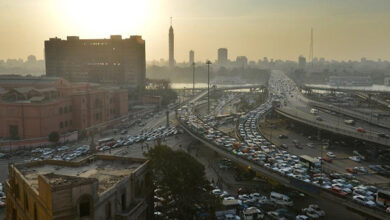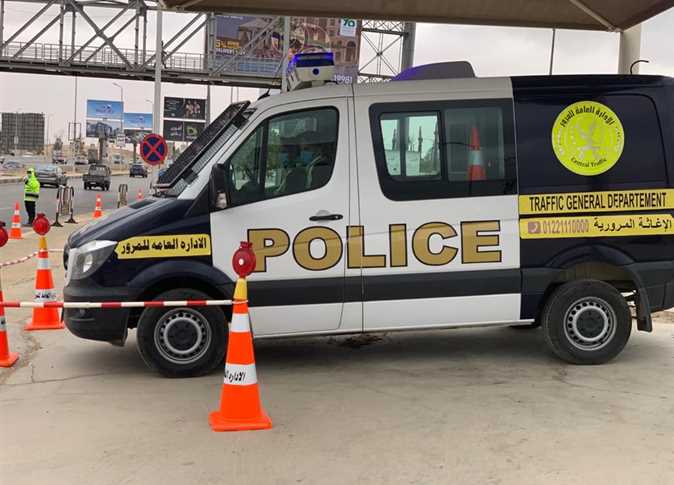While taking a photo of the street sign of Mohamed Mahmoud Street, a police officer stopped to ask me the purpose of taking such pictures. Curious as to my intentions, the officer became intent on spending this particular Friday morning figuring out the mystery behind a seemingly meaningless photo.
“Are you a khawaga (foreigner)?!” the police officer asked, and then shook his head on discovering my Arab origins. “Only khawagat take such pictures. They live here in this area now, around the American University in Cairo (AUC). They walk around with their big cameras and take useless photos!”
Mohamed Mahmoud Street, which connects old downtown Cairo to Tahrir Square, passing by the doors of the old AUC campus, is named after the famous Mohamed Mahmoud Basha, the prime minister of Egypt at the time of King Fouad I.
“He is the same guy that owned the museum with the stolen painting,” the officer points out, referring to the famous Van Gogh painting that was stolen last year from the Mohamed Mahmoud Museum in Dokki.
The officer, who refused to provide his name, explains that “the street used to be extremely busy during weekdays with Egyptian and foreign students studying in AUC.” He gestures to the empty street, then scratches his black mustache. “Today is Friday, that’s why the traffic is smooth, but even on weekdays the traffic has much improved since they moved [the students] away.”
Certainly this street is no stranger to traffic. According to Mahmoud Fouad, a 55-year-old resident who proudly announced that he works for the Ministry of Health, the street hosted the first metro station of the line going to the Helwan neighborhood. “That was more than 25 years ago, and the street was busy with passersby who wanted to use the metro. The station used to be above ground at the time, but that's not the case anymore.”
Fouad is happy with the absence of AUC students at the moment. “It has much less traffic and is much less of a headache,” he points out in an inexplicably angry tone. “Good riddance! They used to fill the street with their cars, and one of them managed to crash into my car once!”
Umm Khaled doesn’t agree with Fouad's statement. She feels that the AUC students' exodus shook her financial security. “I’m a saysa (street valet), and this is my area.” She points out an area on both sides of the street, where Costa Cafe is on one side and Radio Shack on the other. “I used to park for multiple people at times, I used to get money enough to feed my four children. Now that the students are gone, the number of cars parking here has fallen by almost half.”
Umm Khaled and her son have been working in this area for almost seven years. “It’s my area,” she repeats, adjusting her white veil, “and I don’t know where to go and help people park anymore. I can’t change the area I got accustomed to after all these years.”
She was about to elaborate, but a car driver called her name and she disappeared to look for a spot for him to park.
The saysa wasn’t the only one affected by AUC’s relocation: the cafes and restaurants on the opposite side of the street have seen better days as well. “We used to turn people away on exam days,” says Tareq, a waiter in one of the cafes, delivering a mint tea to the table. “AUC students used to come and spend hours working together on their projects, and sometimes they would spend the whole evening here.”
Tareq, glancing around, worrying that his boss might catch him chit-chatting, believes that some of the students are still loyal costumers. "I still see some of them coming here even after they moved the university away. The only difference is that they start to show up on the evening shift rather than the morning one.”
Ordering a Big Mac at McDonald’s next door, the young cashier couldn’t care less about the lack of AUC students. “We still have business and we still get tons of customers.” Wearing the famous red and blue hat he says with a smile, “in this country, all kind of businesses might fall behind, but for sure the fast food business would be the last to be affected.”




